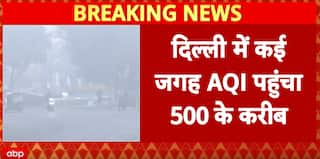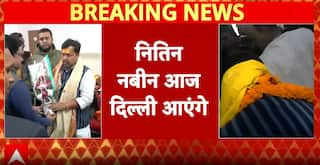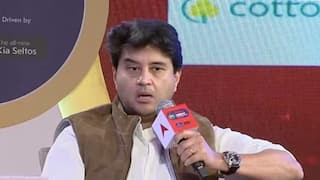How Indian Economy Is Faring After Six Years Of Demonetisation? Let's Have A Look
The key objectives of demonetisation were to wipe out black money, eradicate fake currency notes, and create a cashless economy by pushing digital transactions

To curb circulation and accumulation of unaccounted money, six years ago on November 8 evening Prime Minister Narendra Modi announced demonetisation of currency notes of Rs 500 and Rs 1,000. While the government claimed that note ban has helped greater formalisation of the economy, critics are saying that demonetisation has failed to check black money and reduce dependence on cash.
The prime minister in a televised address to the nation on November 8, 2016, announced that the two banknotes will be "just worthless pieces of paper", with immediate effect. The Centre, however, later introduced new currency notes of Rs 2,000 and Rs 500 for public circulation. While many have pegged it as a ‘bold’ move, the Opposition, however, has criticised the central government over the years, calling the decision a ‘failure’. Whether note ban was a prudent step or not was a matter of debate, but economists, analysts are in unison in referring it as a significant step in India's economic history.
Main Objectives Of Demonetisation
The key objectives of demonetisation were to wipe out black money, eradicate fake currency notes, and create a cashless economy by pushing digital transactions. However, among the three targets, the biggest one was curbing black money. Black money refers to cash that is not accounted for in the banking system or cash on which tax has not been paid to the state.
Battle Against Black Money
According to Reserve Bank of India (RBI) data, almost the entire chunk of money (more than 99 per cent) that was invalidated came back into the banking system. Of the notes worth Rs 15.41 lakh crore that were invalidated, notes worth Rs 15.31 lakh crore returned.
There is no specific data of how much black money was recovered since demonetisation. However, in February 2019, then finance minister Piyush Goyal had told Parliament that Rs 1.3 lakh crore in black money had been recovered through various anti-black money measures, including demonetisation.
Tackling Fake Notes
Tackling forged banknotes also doesn’t work effectively. According to the RBI annual report released on May 27, counterfeit currency notes increased 10.7 per cent in the financial year ended March. The RBI detected a 101.93 per cent rise in fake notes of Rs 500 denomination, while fake notes of Rs 2,000 increased more than 54 per cent.
Digital Push
The RBI data suggested transactions through the Unified Payments Interface (UPI) touched a new high of Rs 12.11 lakh crore in October. In May this year, it crossed the Rs 10-lakh-crore milestone. In terms of volumes, UPI has hit a record of 730 crore transactions in October. In September, UPI transactions hit 678 crore in volume terms breaking the Rs 11-lakh-crore mark. In FY22, around 7,100 crore digital payments were recorded across India. This was a significant increase compared to the previous three years. UPI recorded strong gains, both in numbers and in value, since 2015. The digital economy of India, which is now the fifth-largest economy in the world, has gained major grounds since demonetisation. But it gathered steam mostly after the Covid-19 pandemic.
Cash In Circulation
According to data by the Reserve Bank (RBI), currency with the public has jumped to a new high of Rs 30.88 lakh crore on October 21, indicating that cash usage is still substantial even six years after the demonetisation move. At Rs 30.88 lakh crore, the currency with the public is 71.84 per cent higher than the level for the fortnight ended November 4, 2016. On November 8, 2016, Prime Minister Narendra Modi had announced the decision to withdraw Rs 500 and Rs 1,000 denomination notes with the ultimate target of reducing corruption and black money in the economy.
According to a research report by State Bank of India, the share of Currency In Circulation (CIC) in payment systems has been declining from 88 per cent in FY15-16 to 20 per cent in FY21-22 and is estimated to go down further to 11.15 per cent in FY26-27.
LocalCircles in a report pointed out that six years after demonetisation of high-value currency to weed out unaccounted money in circulation and check the growth of the parallel economy, the verdict is still not clear whether this gigantic step has indeed delivered its set goals.
Drawbacks
According to a report by the PTI, anecdotal evidence reveals that people are still paying or accepting black money in real estate transactions. People are still selling and buying products like hardware, paints and many other household and office paraphernalia and also delivering services without proper receipts, it added.
Industry Views
Shams Tabrej, founder and CEO, Ezeepay
When demonetisation was announced it was a major discussion amongst economists and created controversy in the financial market. PM Modi imposed demonetisation to curb the circulation of black money, dismantle fake funds and regulate a cashless economy through digital transactions. The primary focus was restricting the flow of black money which was successfully achieved as the data suggests. The major benefits supporting the idea of ceasing the old currency resulted in rising GDP growth, diminishing fraudulent practices, and encouraging individuals to handle funds digitally, hence we witnessed the upheaval of digital money nationwide. Prior to demonetisation, people had faith in traditional forms of money give and take or ATM withdrawals, but as demonetisation was introduced it had a perceptive influence on the digitisation of money and slowed the process of money withdrawals from ATMs, thus, it has equally facilitated money transactions via POS (Point of sale terminals) and mobile banking.
Abhishek Gandhi, co-founder, FatakPay
Among other things, the demonetisation of currency has provided a significant boost to the development of digital technology. In the most recent few years, the number of digital transactions has skyrocketed, and these transactions have made last-mile penetrations at the lowest level. In the realms of payments and loans, this has also brought forth a significant amount of transformation and opportunity. The growth of online business has been phenomenal, and experts predict that it will continue to be a key driver of the economy for many years to come.
Manan Dixit, founder, FidyPay
The pre-demonetisation period saw a slow uptake of digital payments in a nation that was heavily reliant on cash. The demonetisation has unquestionably taught India how to use digital payments, and that has had a significant impact on the entire economy and country. Demonetisation was a huge success, as evidenced by the fact that 12 lakh crores worth of UPI transactions were made in a single month. Cash transactions continue to dominate the payments system, which is at a turning point. The change also encouraged people to spend money on numerous digital sites. At the time, the administration said that the move would encourage digital payments, which would make shopping more convenient and transparent. Following demonetisation, digital payments grew significantly, particularly as the government and banking regulator worked to turn India into a "less-cash economy." Prepaid payment methods including wallets, the Unified Payments Interface (UPI), and mobile banking saw a sharp increase in use. In order to make payments simple, hassle-free, and mobile friendly, other platforms, like the utilities payment portal Bharat Bill Payment System (BBPS), also built by NPCI, were launched. This has led to numerous technological advancements, including texting, voice messaging, and SMS alerts, to mention a few.






































